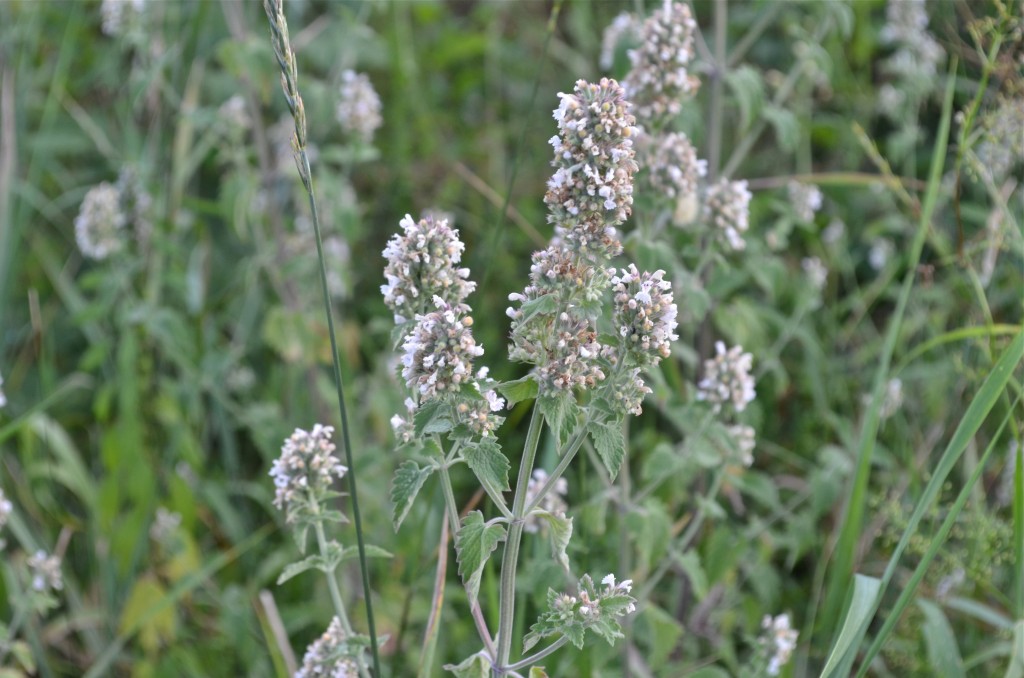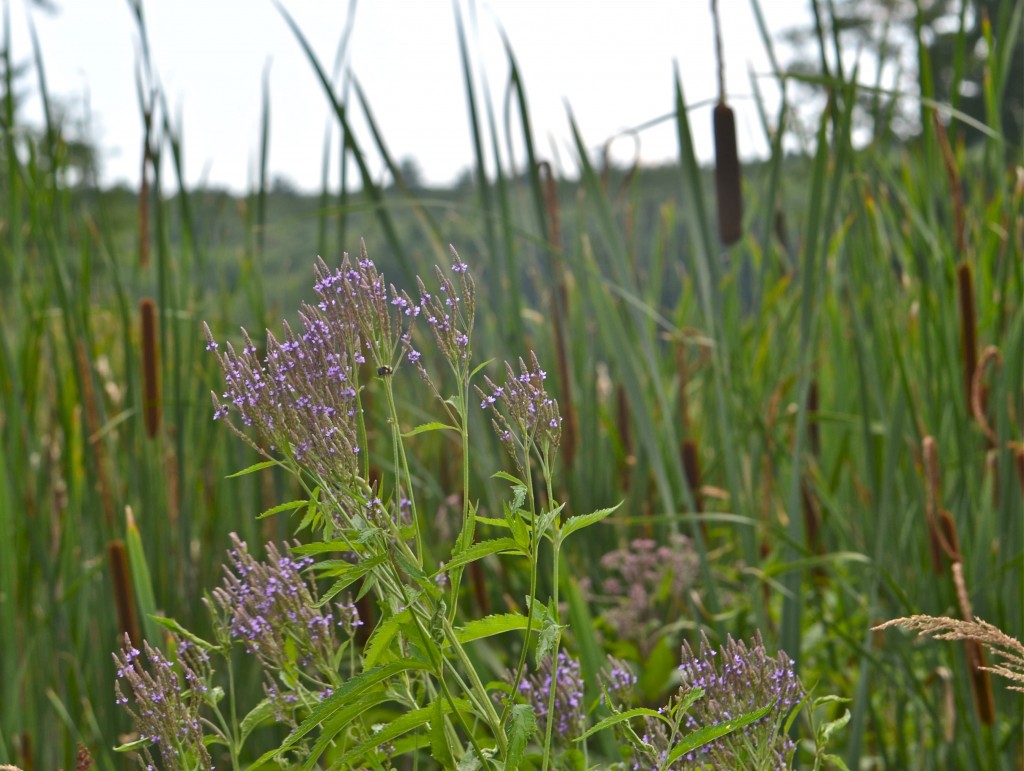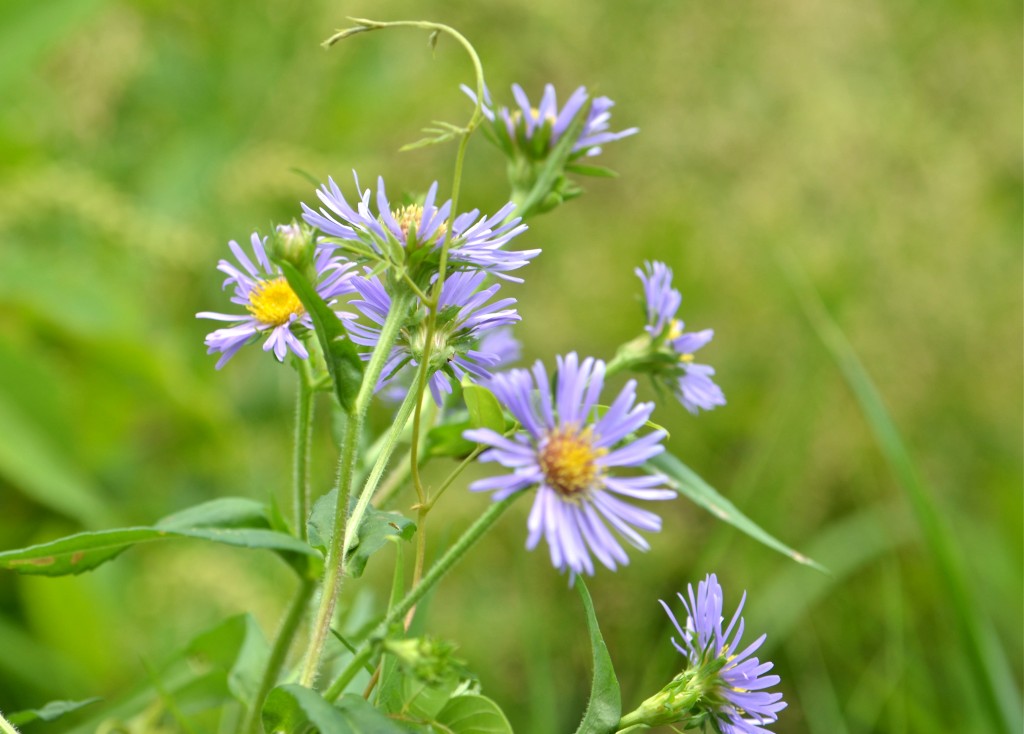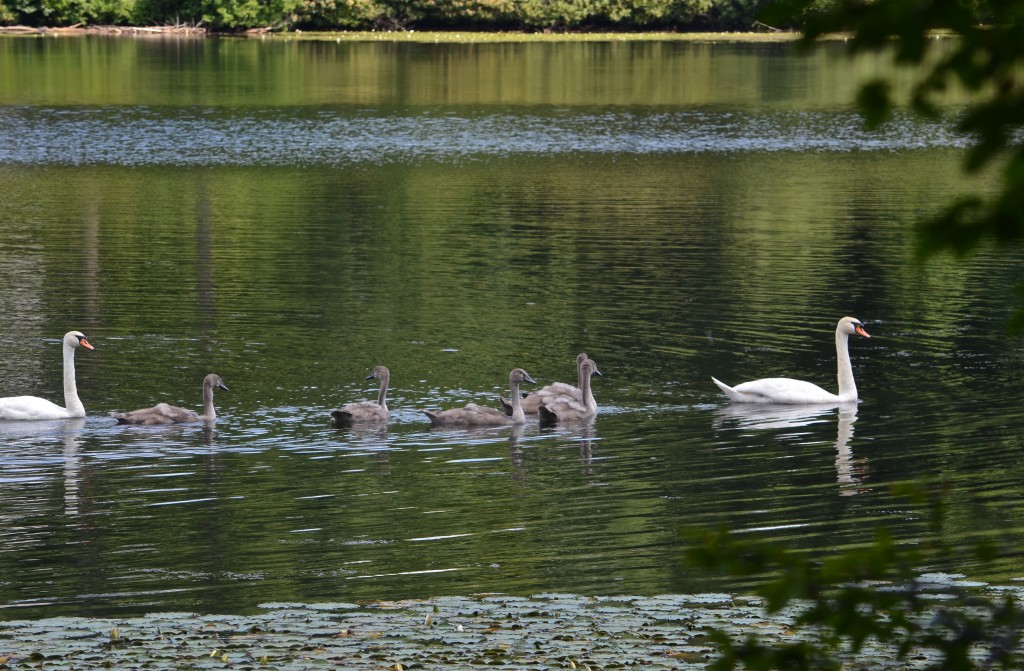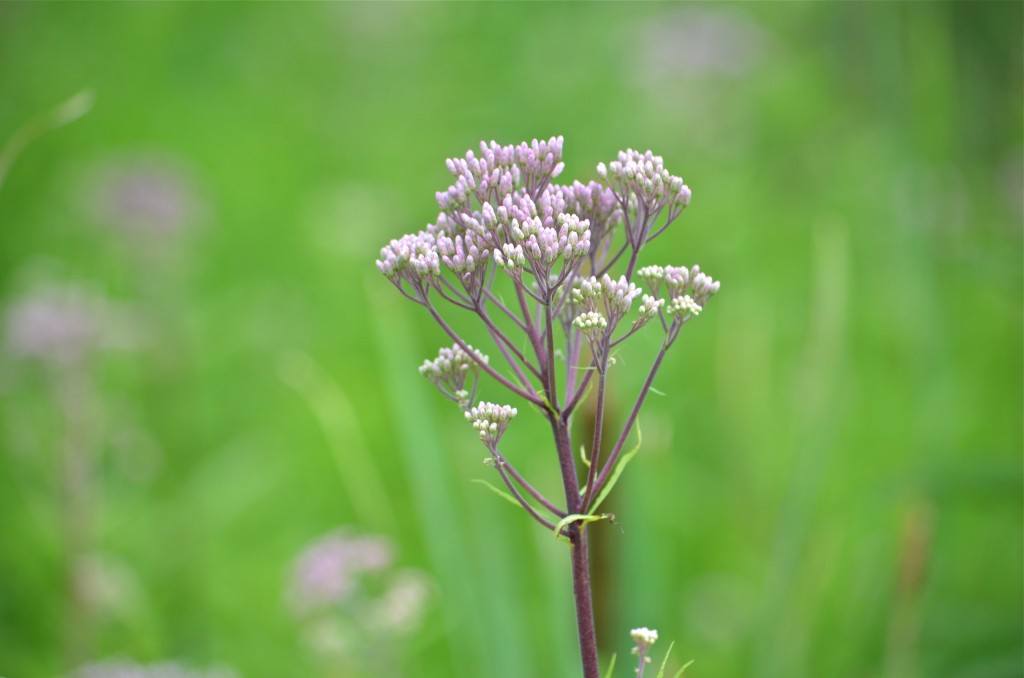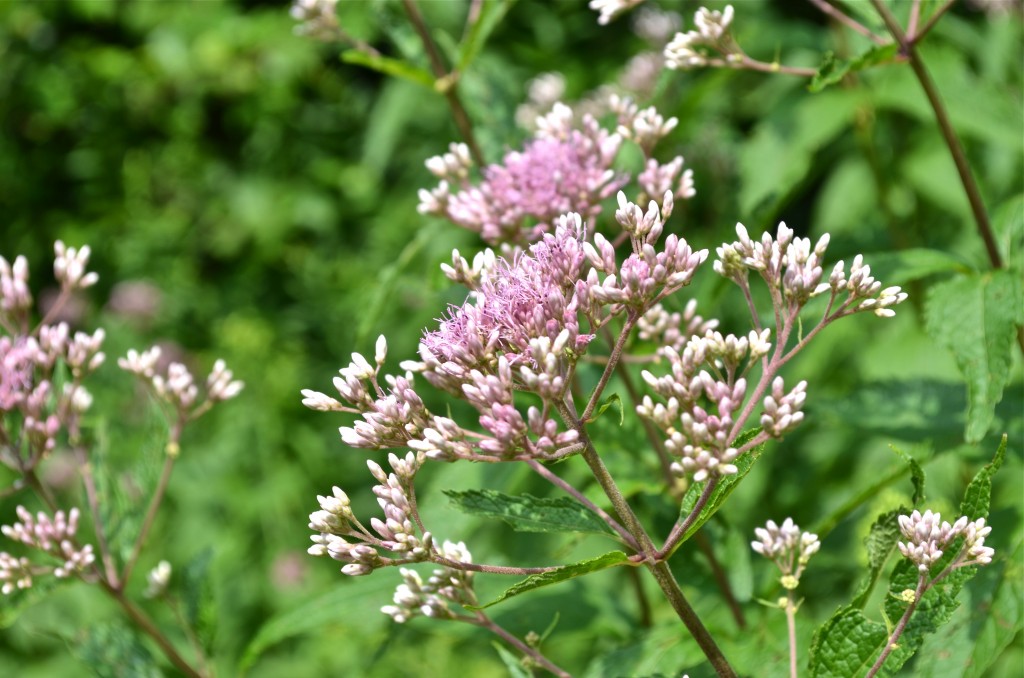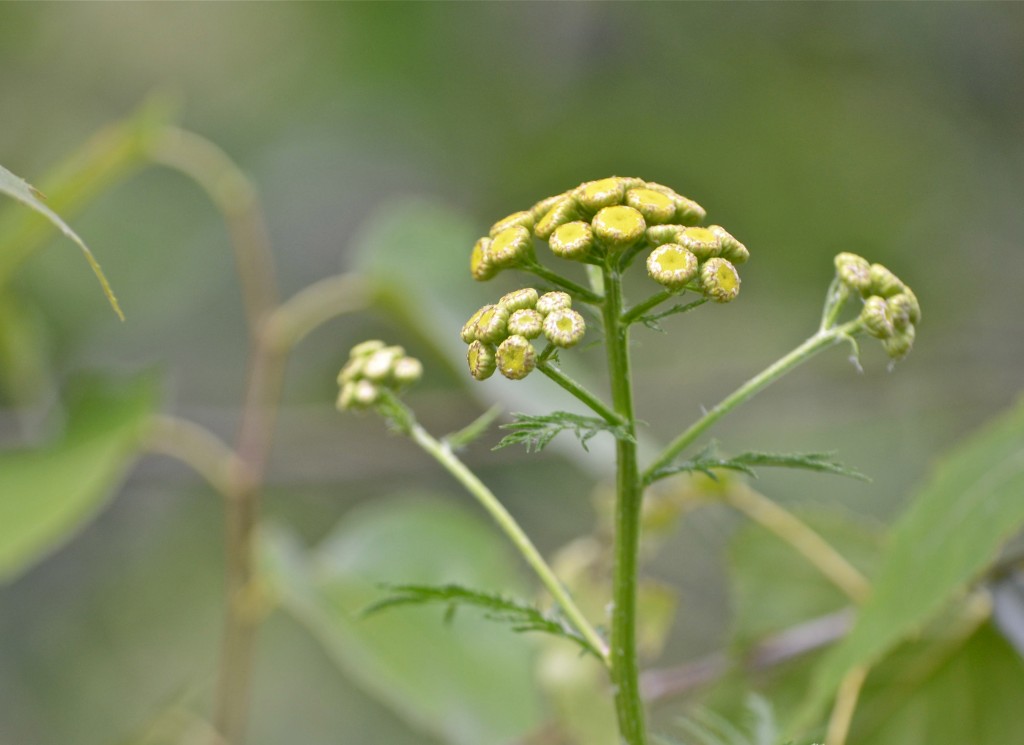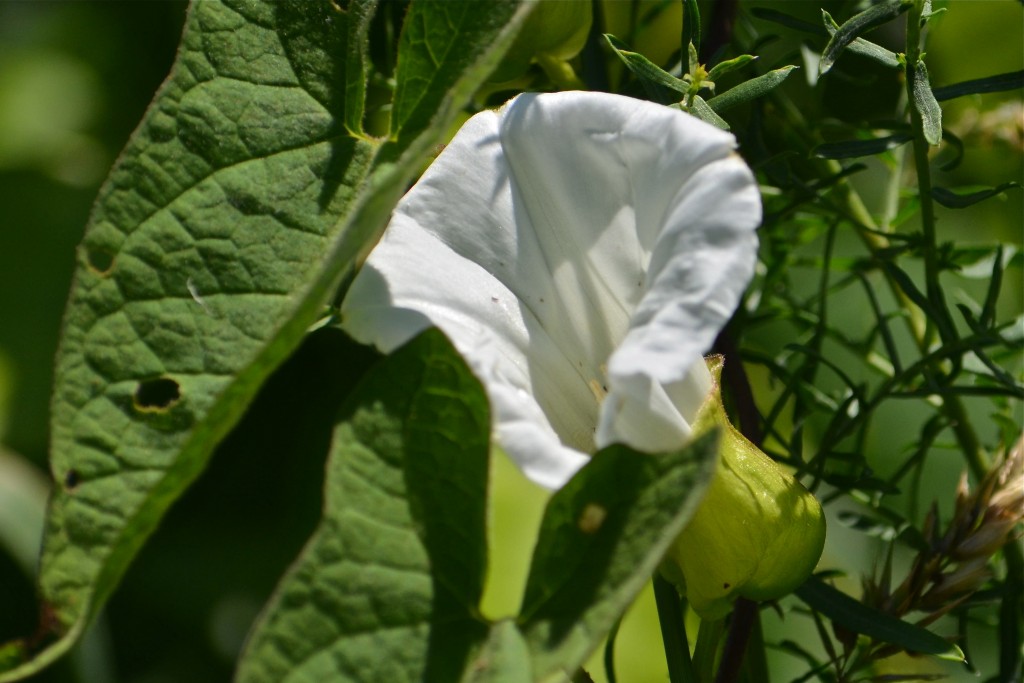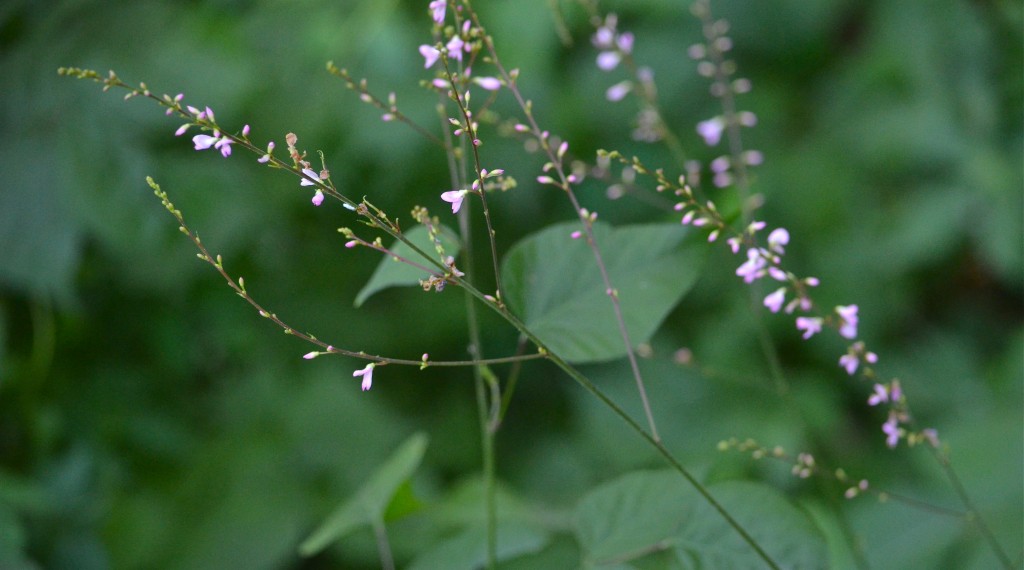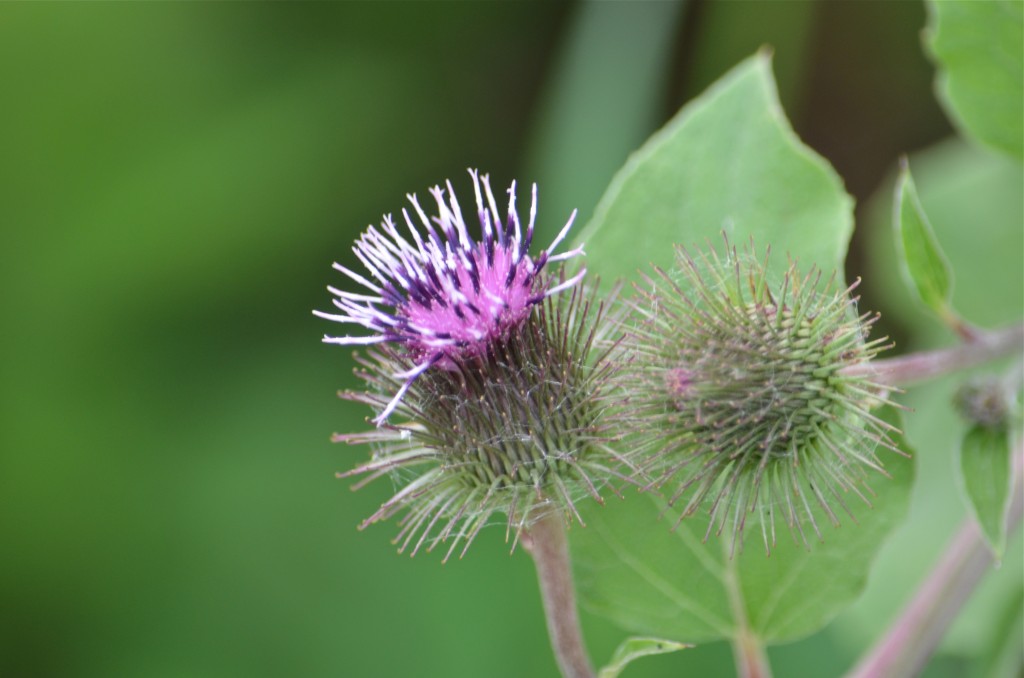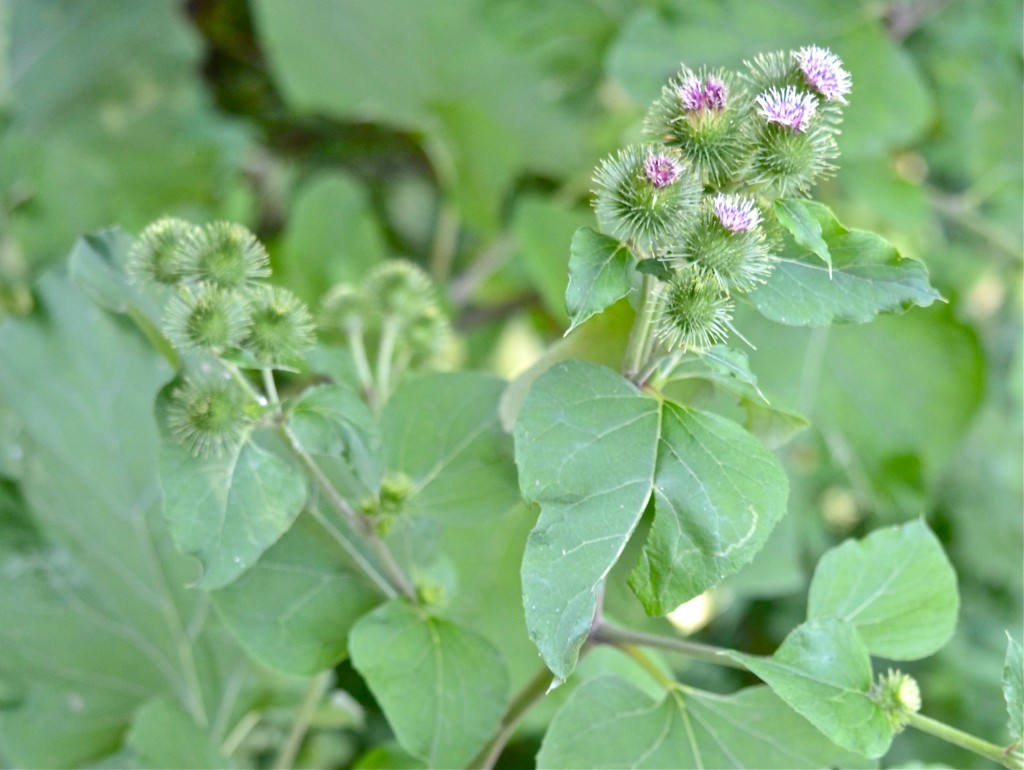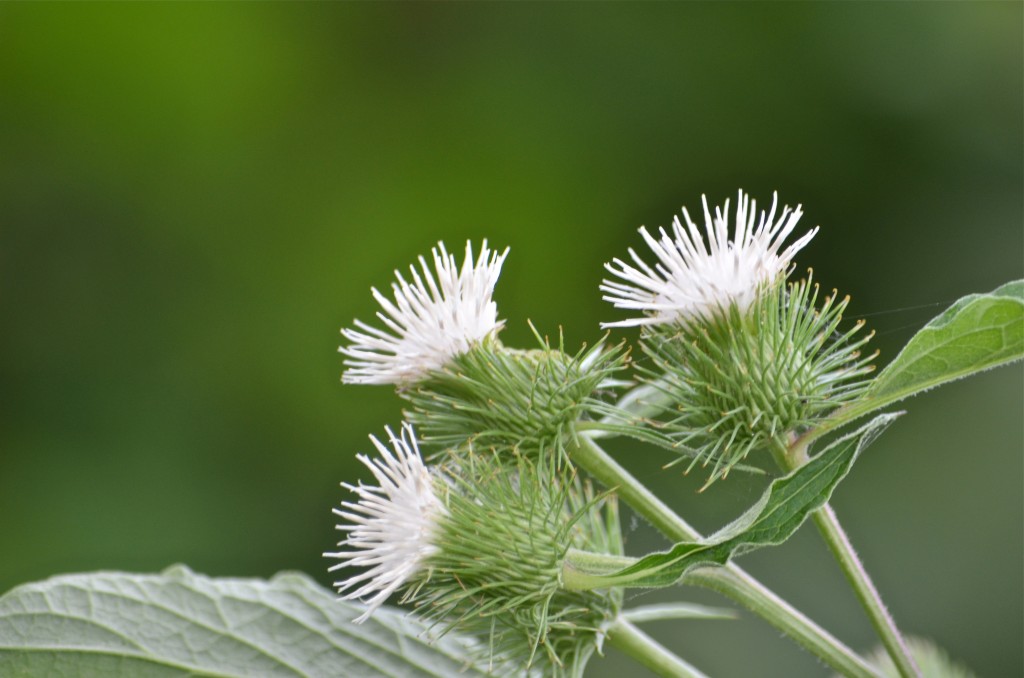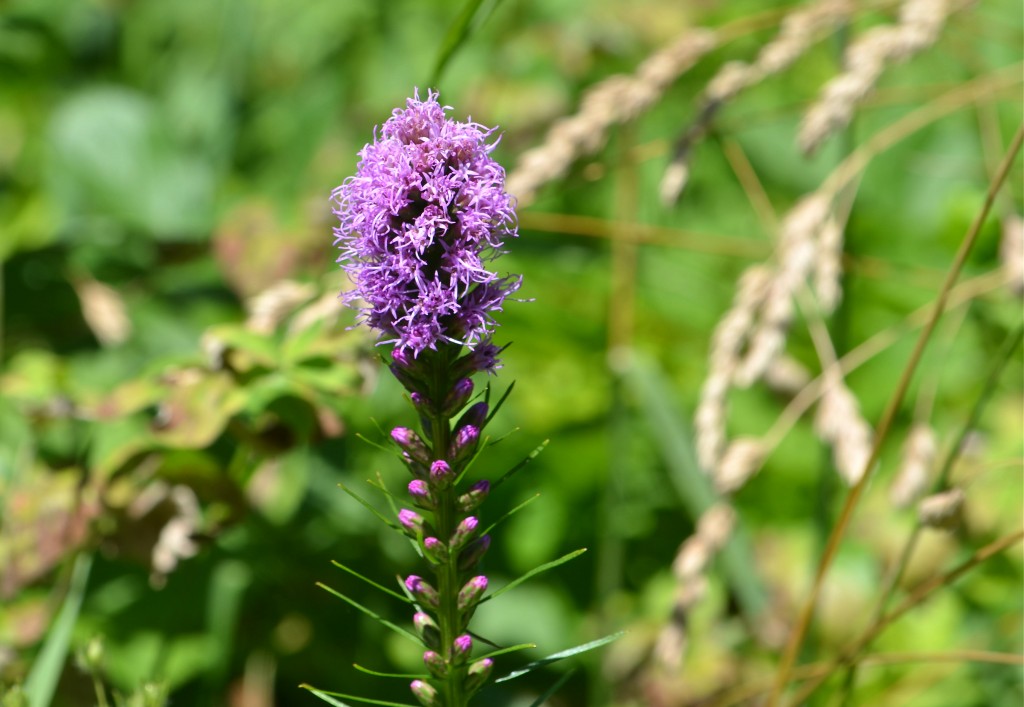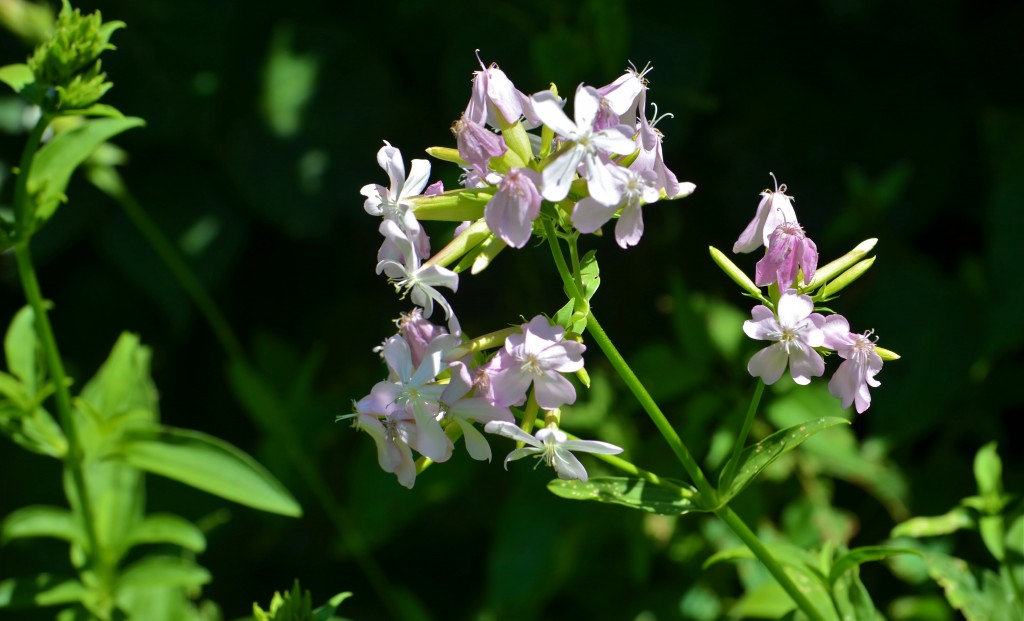It had been a couple of weeks since I visited this area, and the flora had really changed… so many new things in blossom, and so many formerly flowering plants already browning or sprouting seed pods. There is a big stand of this flower and I’m excited to discover that it’s wild catnip! Must collect a few sprigs for the cats in my life. The most drought-resistant member of the Mint family. According to Illinoiswildflowers, “Apparently, a chemical in the foliage produces a pleasant intoxicating effect in cats, somewhat akin to the effect of marijuana on humans. As a result, plants in residential areas may display signs of damage from cats rolling in the foliage.” Native to Eurasia.
Catnip (Nepeta cataria)

